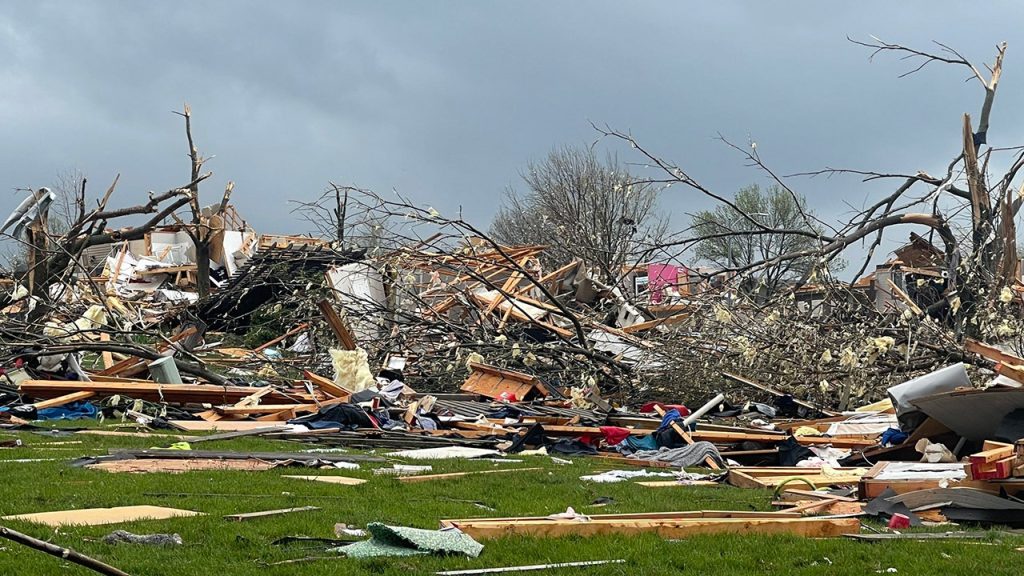Dozens of tornadoes swept across America’s heartland, impacting millions of residents and leaving a trail of destruction. Twenty million Americans, from Texas to Iowa, were on alert for twisters, large hail, and up to 70 mph winds. By 7 p.m. ET, there were at least 59 reported tornadoes across Texas, Oklahoma, Kansas, Nebraska, and Iowa, with heavily damaged homes and shredded trees visible in social media photos. The National Weather Service’s Storm Prediction Center issued an enhanced risk for severe weather over Kansas City, Missouri, Omaha, and Lincoln, Nebraska, with a slight to marginal risk over many areas of Texas and around Shreveport, Louisiana. The agency warned of tornadoes, large hail, and wind damage in multiple states.
The Lancaster County Sheriff’s Office reported that parts of a large manufacturing facility collapsed, trapping at least 70 workers. First responders were able to evacuate all workers, with three employees being treated for injuries. In Omaha, Nebraska, hundreds of houses sustained damage, particularly in the Elkhorn area in the western part of the city. Omaha Police Lt. Neal Bonacci stated that they were receiving 911 calls of people trapped in debris in their basements and were working quickly to assist everyone in need. The tornadoes and severe storms caused widespread devastation across the central U.S., with reports of significant damage in multiple states.
Residents in Nebraska, Kansas, Iowa, and other affected areas were urged to take shelter and heed evacuation orders as the storm system moved through. The National Weather Service continued to monitor the situation and provide updates throughout the evening. The intensity of the tornadoes and severe weather led to concerns about further damage and the safety of those in the storm’s path. Emergency responders and volunteers worked tirelessly to rescue individuals trapped in debris and provide medical assistance to those injured during the storms.
The widespread impact of the tornadoes left many communities reeling, with homes destroyed, trees uprooted, and roads impassable. The aftermath of the storms would require significant cleanup and rebuilding efforts to restore normalcy to the affected areas. Local officials and emergency management teams were coordinating response efforts and evaluating the extent of the damage caused by the tornadoes. The resilience of the impacted communities would be tested as they worked to recover from the devastation and support those in need of assistance.
As the severe weather subsided and the immediate danger passed, assessments and evaluations would be conducted to determine the full extent of the damage caused by the tornadoes. Recovery and rebuilding efforts would be mobilized to help affected residents and communities recover and rebuild in the aftermath of the destructive storms. The coordinated response from emergency services, local authorities, and residents demonstrated the strength and resilience of communities in the face of natural disasters. The impact of the tornadoes served as a reminder of the importance of preparedness and response efforts in ensuring the safety and well-being of residents in the face of severe weather events.
The tornado outbreak served as a sobering reminder of the destructive power of nature and the need for vigilance in monitoring severe weather conditions. The widespread damage caused by the tornadoes highlighted the importance of early warnings and preparedness measures in minimizing the impact of such events. As affected communities began the process of recovery and rebuilding, the support and assistance of volunteers, first responders, and relief organizations would play a crucial role in helping those impacted by the tornadoes. The resilience and strength of the communities affected by the storms would be tested as they worked together to overcome the challenges posed by the devastation and rebuild their homes and lives.


